How to Detect Life on Mars
Scientists from the Search for Extra-Terrestrial Genomes instrument team develop method to detect the tiniest traces of life on other planetary bodies
by Fatima Husain

When Christopher Carr visited a green sand beach in Hawaii at the age of 9, he probably didn’t think that he’d use the little olivine crystals beneath his feet to one day search for extraterrestrial life. Carr, now the science principal investigator for the Search for Extraterrestrial Genomes (SETG) instrument being developed jointly by the Department of Earth, Atmospheric and Planetary Sciences (EAPS) at MIT and Massachusetts General Hospital, works to wed the worlds of biology, geology, and planetary science to help understand how life evolved in the universe.
“Our history revealed by science is a truly incredible story,” Carr says. “You and I are a part of an unbroken chain of four billion years of evolution. I want to know more about that story.”
SETG was initially proposed by professor of genetics at Harvard Medical School Gary Ruvkun, and has been led by planetary scientist and Vice President for Research at MIT Maria Zuber since 2005.
As science PI of SETG, Carr, along with a large team of scientists and engineers, has helped develop instrumentation that could withstand radiation and detect DNA, a type of nucleic acid which carries genetic information in most living organisms, in space-flight environments. Now, with the advent of rover missions to Mars, Carr and his colleagues are working to fine tune the instrumentation to work on the red planet. To do that, the team needed to simulate the kinds of soils thought to preserve evidence of life on Mars, and for that, they needed a geologist.
Angel Mojarro, a graduate student in EAPS, was up for the task. Mojarro spent months synthesizing Martian soils that represented different regions on Mars, ground truthed by Martian rover data.
“Turns out you can buy most of the rocks and minerals found on Mars online,” Mojarro says. But not all.
One of the hard-to-find components of the soils was olivine from the beach Carr visited as a child: “I called up my folks and said, ‘Hey, can you find the olivine sand in the basement and send me some of that?”
After creating a collection of different Mars analog soils, Mojarro wanted to find out whether SETG could extract and detect small amounts of DNA embedded in those soils as it would do on a future Mars mission. While many technologies already exist on Earth to detect and sequence DNA, scaling down the instrumentation to fit on a rover, survive transport from Earth, and conduct high fidelity sequencing in a harsh Martian environment is a unique challenge. “That’s a whole bunch of steps no matter what the sequencing technology is right now,” Carr says.
The SETG instrumentation has evolved and improved since its development began in 2005, and, currently, the team is working to integrate a new method, called nanopore sequencing, into their work. “In nanopore sequencing, DNA strands travel through nano-sized holes, and the sequence of bases are detected via changes in an ionic current,” Mojarro says.
By themselves, Mojarro’s Mars analog soils didn’t contain microbes, so to test and develop nanopore sequencing of DNA in Mars analog soils, Mojarro added known quantities of spores from the bacteriumBacillus subtilisto the soils. Without the aid of human help on Mars, SETG instrumentation would need to be able to collect, purify, and enable the DNA to be sequenced, a process which usually necessitates about a microgram of DNA on Earth, Mojarro says.
Mojarro’s results using the new sequencing and preparation method pushed the limits of detection to the parts-per-billion scale — which means even the tiniest traces of life could be detected and sequenced by the instrument.
“This doesn’t just apply to Mars … these results have implications in other fields, too,” Mojarro says. Similar methods of DNA sequencing on Earth have been used to help manage and track Ebolaoutbreaks and in medical research. And further, improvements to SETG could have important implications for planetary protection, which aims to prevent and minimize Earth-originating biological contamination of space environments.
Even at the new detection limit for the SETG instrumentation, Mojarro was able to differentiate between human DNA and the BacillusDNA. “If we detect life on other planets,” Mojarro says, “we need a technique that can tell apart hitch-hiking microbes from Earth and Martian life.”
In their publication, Mojarro and Carr suggest that these developments may fill in some of the missing gaps in the story of life on Earth. “If there’s life on Mars, there’s a good chance it’s related to us,” Carr says, citing previous studies describing the planetary exchange of materials during the Late Heavy Bombardment period (4.1 to 3.8 billion years ago).
If SETG detects and sequences DNA on Mars in the future, Carr says the results could “rewrite our very notion of our own origins.”
Read more about the research here: https://www.liebertpub.com/doi/10.1089/ast.2018.1929


